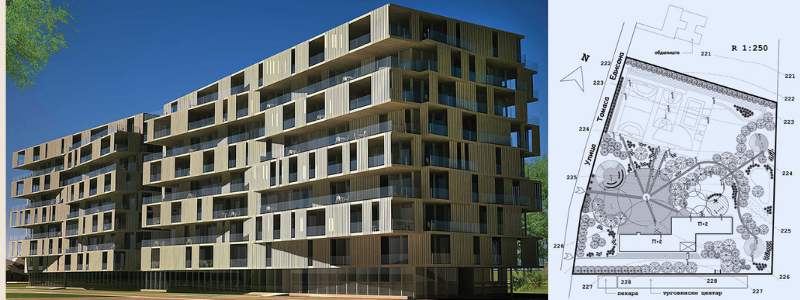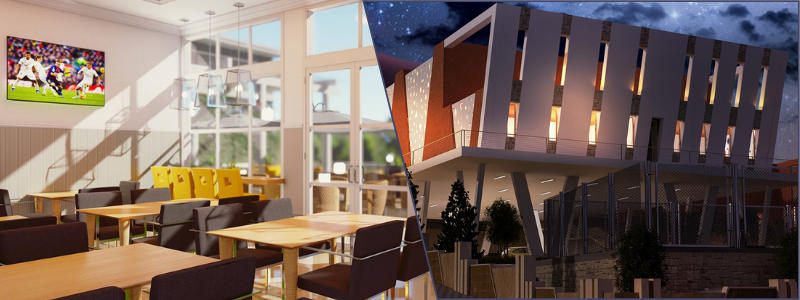This post covers how architectural design services can affect hospitals and patients. A significant factor of an effective performance is determined by how well workers undertake challenges in their work environment. However, a lack of professionalism can occur due to a poorly designed setting. The hospital’s architectural planning and design affect doctors, nurses, caregivers, and the patients undergoing treatment in a healthcare facility. Indeed, architectural and interior design plays a constituent in staff performance and care quality.
For example, when comparing a multiple-bed setting and a single patient room, the patient in the single room has a greater chance of receiving quality attention. In the 1980s, the first post-modern-style hospitals came into development. Previously, the tower-shaped buildings did not allow space for horizontal expansion as we see today. Our current hospitals are no longer quite tall and slick, as seen in pre-WWII hospitals.
You may even notice that hospital lobbies look a lot like shopping malls and how some areas drop their corporate nature to favor a home-like coziness. Some changes on the structure’s exterior include bright colors and green foliage on walkways to provide a sense of relaxation in a hectic environment. A primary measure to grant a family-centered care facility is making hospital trips appear as a regular day-to-day routine for visitors, like a trip to the mall. While various healthcare professionals prefer fewer distractions than those stated, the patients feel welcome and encouraged to remain calm and reduce stress.
Additionally, private patient rooms become ideal when patients treat the environment as if they are at the mall or a hotel lobby. With architectural design guidance, stress is reduced to allow the staff to perform their roles well in an appropriate setting. Health professionals’ efforts to address latent requirements and improve patient outcomes involve creating architecture designs to decrease distractions, ensure adequate documentation space, standardize supplies, equipment locations and promote reliable work areas.
A multifaceted approach to redesign a room can be necessary to help caregivers prevent errors and practice mitigations when they occur. Due to the complexity of functions, hospitals are by specialized architectural firms. By following their strategy, some innovation ideas get restricted as they may not apply to hospitals’ design due to strict controls and regulations on inpatient care. On the other hand, hospitals ought to look modern and comfortable for better patient and staff outcomes.
Social design
Social Design refers to a specific approach to the architectural style that emphasizes the relationships between people and the structure of a building where people live or work. The purpose is to address the needs of the communities inside the building. For example, in the United States, hospitals with more operating rooms and fewer labor rooms tend to facilitate unnecessary cesarean deliveries. Therefore, adding more labor rooms could prevent thousands of surgical complications each year.
RELATED: What are the Principles of Architectural Design?

Built environment factors
Below are six identifiable architectural design elements that could significantly increase patient quality care and safety:
Patient-centeredness
- labeled signs to assist patients and visitors in navigating around the hospital
- sufficient space to accommodate family members
- easy access to healthcare information
- advantage of single-bed rooms
Safety
- filtration and ventilation system to prevent the spread of infectious diseases
- greater availability of assistive devices
- easy-to-decontaminate surfaces
- readily-available hand washing with hand rubs and alcohol
- the adequate transition of the patient for effective interdependencies of care (paramedic, emergency, ambulatory, laboratories, pharmacies)
Effectiveness
- standardization of room layout
- strategic placement of medical equipment storage and medical supplies
- installation of acuity-adaptable units
Efficiency
- natural lighting for patient rooms
- enhance visual performance with artificial lighting
- noise-dampening structure
Timelines
- rapid response to patients
- efficient care delivery
- clinical work of nurses
Equity
- hospital structure, including size, layout, and function, must be able to facilitate care for the diverse needs of patients
The healthcare facility’s design directly impacts patients’ stress, experience, comfort, and staff performance metrics. Hospital design, especially in single-bed rooms, has an excellent platform to enhance safety by creating a healthier environment for patients and family members. Single-bed rooms also allow for easy noise management and more effective prevention of medical errors.
Environmental stressors in such spaces can be minimized with positive elements such as a window view of the park, neutral wall colors, adequate or natural lighting, and adjustable artwork.
RELATED: Architectural Illustrations vs. Architectural Visualization Services

Social design principles
MASS Design Group, a nonprofit architectural firm, identifies four principles adaptable to any constructed environment for healthcare purposes.
The vision reflects objectives
Hospitals traditionally measure success in terms of bed occupancy. The more patients get admitted to their facility, the better the performance. As a result, the hospital’s architectural design features many private rooms but sacrifices space for patients to walk around, an essential activity for their recovery.
Visibility is more enjoyable
Room layout and navigation are standard in hospitals and other organizations. It is not about mapping the building but also the system at work in the hospital. Visual communication shouldn’t be limited to static maps in a healthcare facility. It may include patient traffic patterns and information flow.
External input
Architects are creative problem solvers – creating designs that solve intricacies often means looking at issues through the lenses of numerous people like patients, visitors, physicians, nurses, and administrators. To find a solution, an architect requires to know why and how a problem arose. For example, will a change in bed orientation affect health outcomes? What are some reasons to use electric-powered ventilation in a hospital when the power grid busts frequently?
In case the power grid goes out, will everyone get exposed to airborne diseases? Is there any good reason why patients in a multi-bedroom should listen or stare at other sick people instead of seeing nature outside through a glass window? Although architects are not specialists in healthcare studies, they can use medical information to build a case and discuss it with doctors, psychiatrists, and anyone in hospital management.
Constant experimentation
An architect prepares the to-be-constructed facility for ongoing and future changes when newer innovations arrive in building design. The endless investigation is necessary to keep the design plan moving forward in preparation for the next cycle. Interdisciplinary discussions between architects, clinicians, engineers, business professionals, including patients ensure all ideas connect to a single thread of problem-solving and continual innovation. When patients become eager to seek information regarding healthcare facilities, adopting social design principles in architecture can help hospitals thrive and improve health outcomes.
How Cad Crowd can help
Whether you’re looking to build a sleek modern bungalow or are planning a mixed retail and residential development, the architects in our global network have the expertise you need. Our architectural design experts offer a wide range of services: Freelance 3D modeling, 2D & 3D drafting, building information modeling (BIM), house floor plans, site plans, building layouts, survey drawings, elevations, cross-sections, complete construction documents, presentation models, working drawings, industrial designs, and 3D renderings for your building projects.
Get a free quote today.
